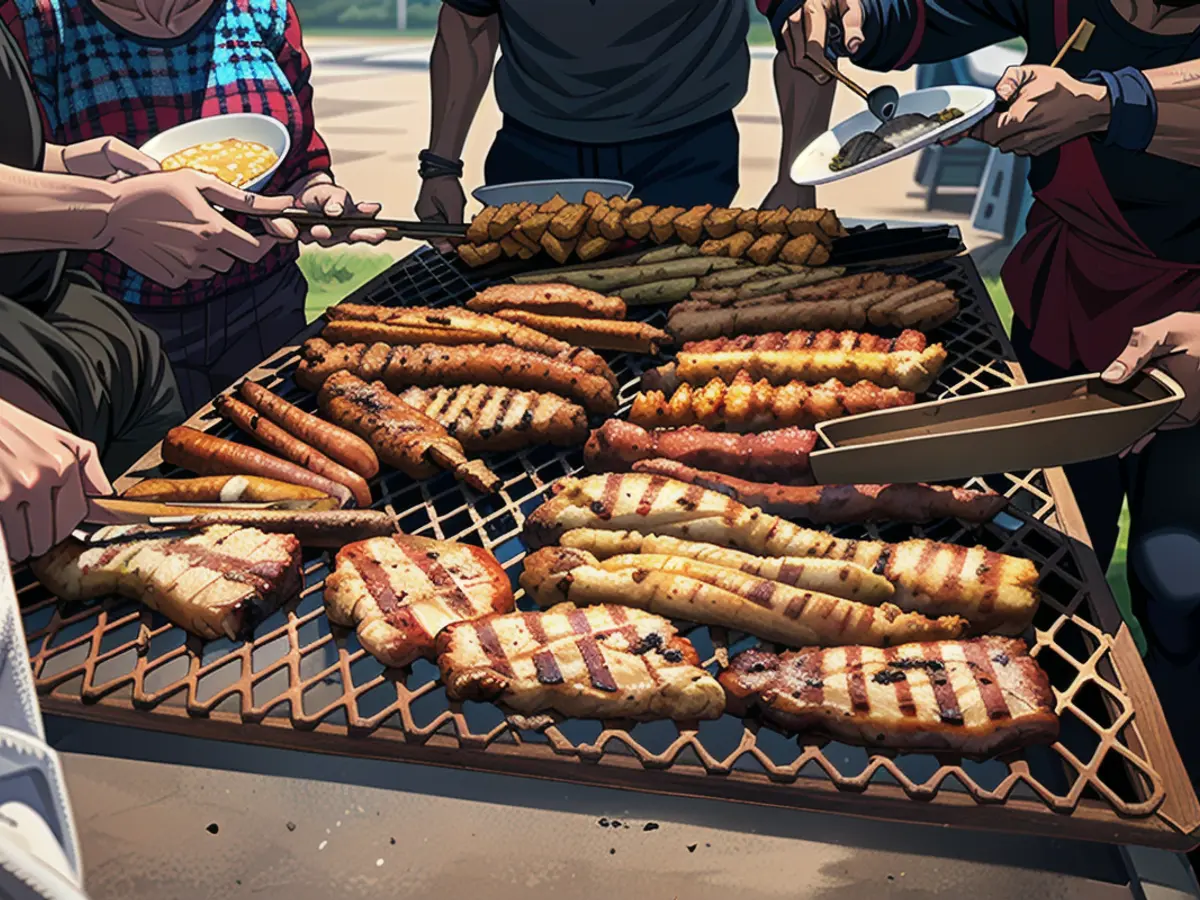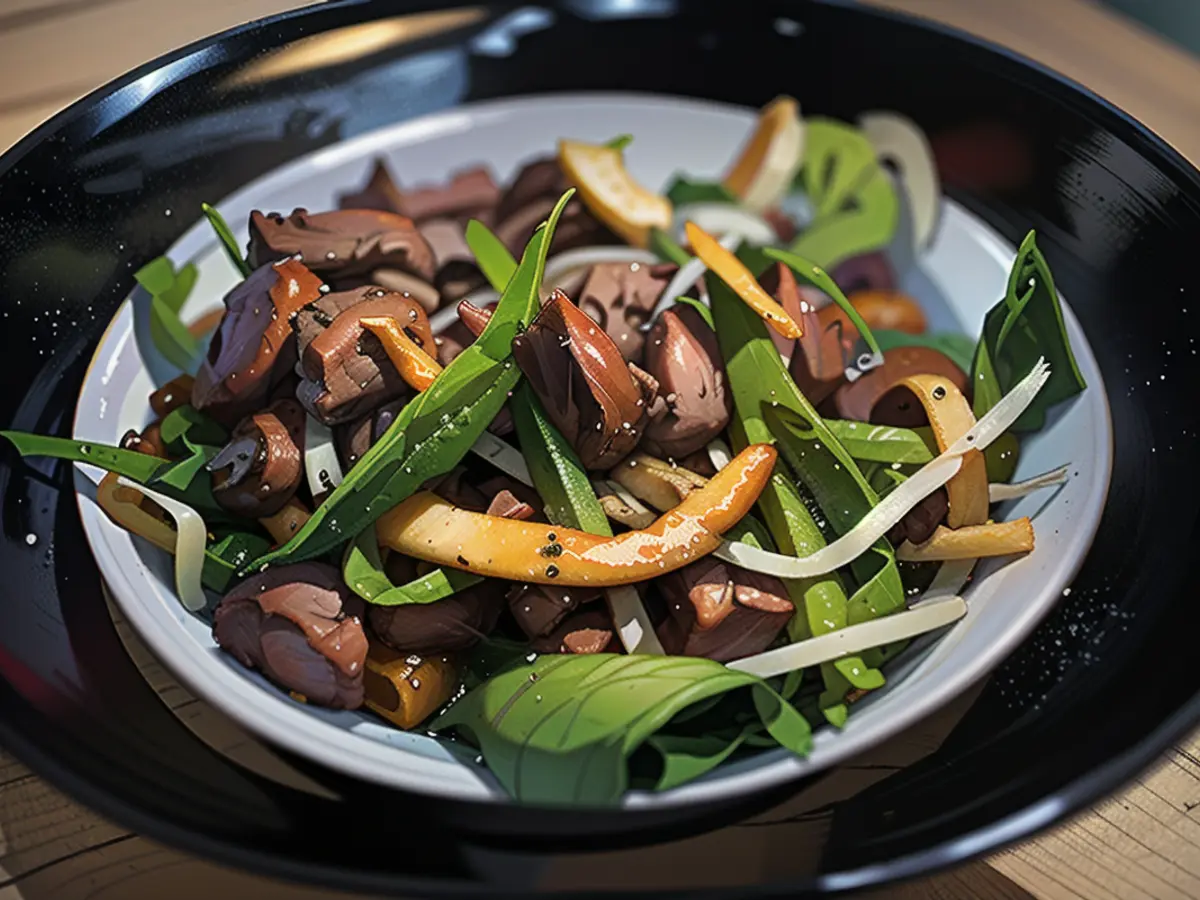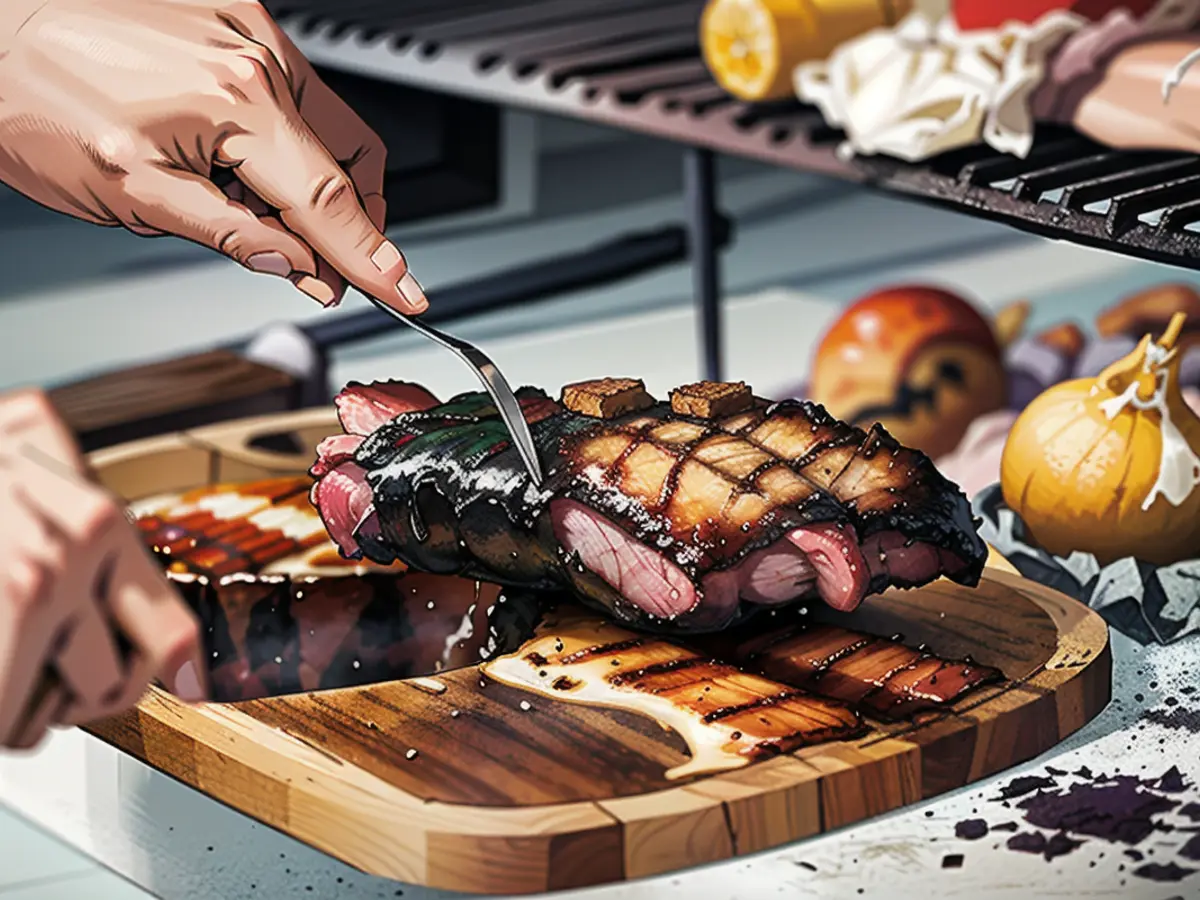The top BBQ cuisine worldwide
Although America is renowned for its grilling skills, critics argue that it cannot match the charcoal-infused meat culture of countries like Argentina or South Africa. The origin of the word 'barbecue' is obscure; it has been proposed that it is derived from 'barbacoa', a term used by Spanish explorers to describe the Caribbean's indigenous Taino people's cooking approach.
In any case, barbecuing encompasses various techniques: grilling, cooking above fire pits, underground, and in clay ovens. There are local variations and customs across the world, including South America, Africa, and Asia.
Let's explore these global demonstrations of the lip-smacking barbecue experience.
Braai (South Africa)
South Africa's most cherished culinary tradition is the braai ("barbecue" in Afrikaans). This uniting force transcends racial and economic divides, bringing people together over slabs of juicy steak, sausages, and chicken sosaties (skewers).
During a traditional "Sunday Funday" at a shisa nyama event, which is more common in the townships, you'll often find on-site butchers, cooks, refreshments, and DJs setting the party vibe. Chicago native Unique Love, a model who lived in Cape Town for three years, cherishes her first shisa nyama:
"Having a braai at Mzoli's Meat in Cape Town felt like home. After eating, I never wanted to leave because the atmosphere was so welcoming."
Asado (Argentina)
Despite fluctuating as the world's top consumer of beef, Argentina is well-known for its passion for barbecue. Owing to its hearty grilling culture, attending a sociable asado (barbecue) is a usual occurrence.
While an array of meats and cuts are on offer at every gathering, Argentinian chef Guillermo Pernot, the chef-partner of Cuba Libre Restaurant & Rum Bar, endorses a specific selection for the ultimate asado experience:
"To fully enjoy an asado, you should cook sweet pork and beef sausages, sweetbreads, thigh intestines, and blood sausages."

Moreover, he suggests using coarse salt to season your meats and having the essential chimichurri sauce (composed of parsley, garlic, oregano, vinegar, and chili flakes) handy.
Yaiktori (Japan)
Yakitori, a Japanese favorite, is an assortment of chicken pieces on bamboo skewers grilled over a charcoal-fueled hearth. The definition of 'yakitori' has expanded to include skewered vegetables, seafood, pork, and beef.
Tanya Spaulding, a travel blogger, offers her advice on indulging in yakitori:
"The most delicious way to relish yakitori is by either buying it from a roadside vendor or dining at a place where you can cook your skewers over a shichirin grill placed on your table."
Churrasco (Brazil)
Churrasco, a staple in Brazil, showcases a vast assortment of grilled meat cuts. This practice, found in several other countries including Bolivia, Ecuador, Guatemala, and Portugal, usually involves seated diners receiving a continuous supply of meat brought to their tables by restaurant servers.
Dan Clarke, director of RealWorld Holidays, shares his thoughts on Brazilian churrascarias:
"Unlike Argentinian asados, where vegetarians are limited to salads and fries, Brazilian churrascarias typically boast an array of salad bars brimming with delightful offerings."
Lechon (Philippines)

Culinary enthusiasts with a penchant for large meals will appreciate the Philippines' lechon (Portuguese for 'suckling pig'). A whole pig is skewered and roasted over a charcoal fire or in an oven. Lechon is frequently held up as the Philippines' national dish, though there's a similar claim from Puerto Rico.
The lechon cooked in Cebu, one of the Philippines' islands, is often regarded as the most delectable rendition globally.
Having said that, once a year, the Philippines celebrates the Parada ng Lechon, a religious-themed event where lechons are blessed at a mass. The day concludes with a joyous parade featuring music, festive floats, water guns (for the baptism), and lechons donning outrageous garments and accessories.
### Tandoor (India)
This well-known Indian tandoori chicken dish is categorized as a type of barbecue.
The name "tandoori" comes from the tandoor, a clay oven where dishes like naan bread, chicken, seafood, and various meats are cooked using high heat charcoal.
Manjit Gill, who's the corporate chef for ITC Hotels and a famous Indian celebrity cook with several popular restaurants like Bukhara in New Delhi, explains that the art of the tandoor originated from Central Asian nomads. They cooked food over charcoal pits and roasted meat on spits.
"The Tandoori cuisine as we know it today was introduced in post-partition India when people found out it was a better method to cook meat in a tandoor than on a spit," says Gill.
Mongolian BBQ (Taiwan)
In a surprising twist, Mongolian barbecue, despite its name, was actually invented in Taiwan.

Erin Yang, a travel enthusiast and Taiwanese native, describes it as a combination of sliced meat, noodles, and vegetables that are quickly cooked on a flat circular metal surface.
Mongolian barbecue was popularized in Taiwan in the 1950s and was influenced by Japanese teppanyaki and Chinese stir-fry. It's also consumed in certain regions of China. According to Monica Weintraub, a Beijing-based food and travel blogger, meat like beef and lamb are commonly served with chili powder, cumin seeds, and salt.
Lovo (Fiji)
Fiji's barbecue tradition has a unique method of preparation.
Erin Yang clarifies: "Unlike other barbecue styles, Fijian barbecue is cooked in a 'lovo,' which is an earth oven."
The process for creating a lovo involves placing piping-hot stones into a large hole in the ground to allow for slow-smoked cooking. Food items like pork, chicken, vegetables, taro root, and seafood are wrapped in taro or banana leaves and placed on the stones. After two to three hours, the lovo will be ready to be enjoyed.
When the pit-cooked food is finally unearthed, there's often a lot of celebration from the diners, perhaps because of the lengthy wait for the cooking to be finished.
Umu (Samoa)
Samoa's version of the barbecue is, like Fiji's lovo, an underground cooking method.
Avichai Ben Tzur, a travel writer/entrepreneur who has spent a lot of time in the South Pacific, describes the pre-cooking preparations as a family activity.

"Young men from the extended Samoan family gather together to prepare the 'umu,' hours before the traditional Sunday feast begins," he says. "They catch fresh fish, slaughter a pig, collect taro leaves and breadfruit from the family's agricultural land, and crack open coconuts for the palusami."
The palusami, a Samoan staple made from coconut cream (seasoned with onions, lemon juice, and simple spices) wrapped in taro leaves, is a "delicious calorie bomb that cannot be resisted by Samoans," according to Tzur.
Gogigui (Korean Peninsula)
Gogigui, which translates to "meat roast" in Korean, is a favorite among Korean and international food enthusiasts.
Dining at a Korean BBQ typically consists of thinly sliced beef, pork, and chicken, accompanied by various side dishes called banchan and rice cooked in the center of the table. Diners often cook their own food or the chefs prepare the food for them.
If you decide to prepare your gogigui at home, "Masterchef Korea" finalist Diane Sooyeon Kang provides some tips.
"For thin slices of meat like chadolbaegi (thinly sliced beef brisket), you should lie it flat and cook it quickly for a few seconds on each side," she suggests. "For meats like yangnyeom galbi (marinated short ribs), high heat and fire are best, as it will caramelize the outside while keeping the meat juicy on the inside."
Jessica Mehta, who has lived in Korea for a year, suggests: "You're not truly enjoying Korean barbecue if you don't pair it with soju, a clear liquor similar to sake."
Pachamanca (Peru)
Although Peruvian cuisine is famous for ceviche and Pisco sour cocktails, their ancient Incan tradition of pachamanca remains largely unknown by many.

Pachamanca means "earth pot" in the Quechua language, and involves digging to create a ground oven and lining the cavity with fire-heated stones to cook the food.
A variety of potatoes, corn, legumes, and marinated meats are wrapped in banana leaves and placed into the earth oven for several hours.
Authentic pachamancas are typically served while sitting on the ground and usually occur on special occasions, especially during religious ceremonies or during harvest time in February and March.
Read also:
- Fear of escalation in the Middle East: US Secretary of State Blinken travels to the region again
- Government circles: US Secretary of State Blinken to travel to Middle East again
- Bridging days 2024: How you can double your vacation this year
- Germany has wanderlust: how tour operators and airlines are looking ahead to the next travel year
Source: edition.cnn.com








